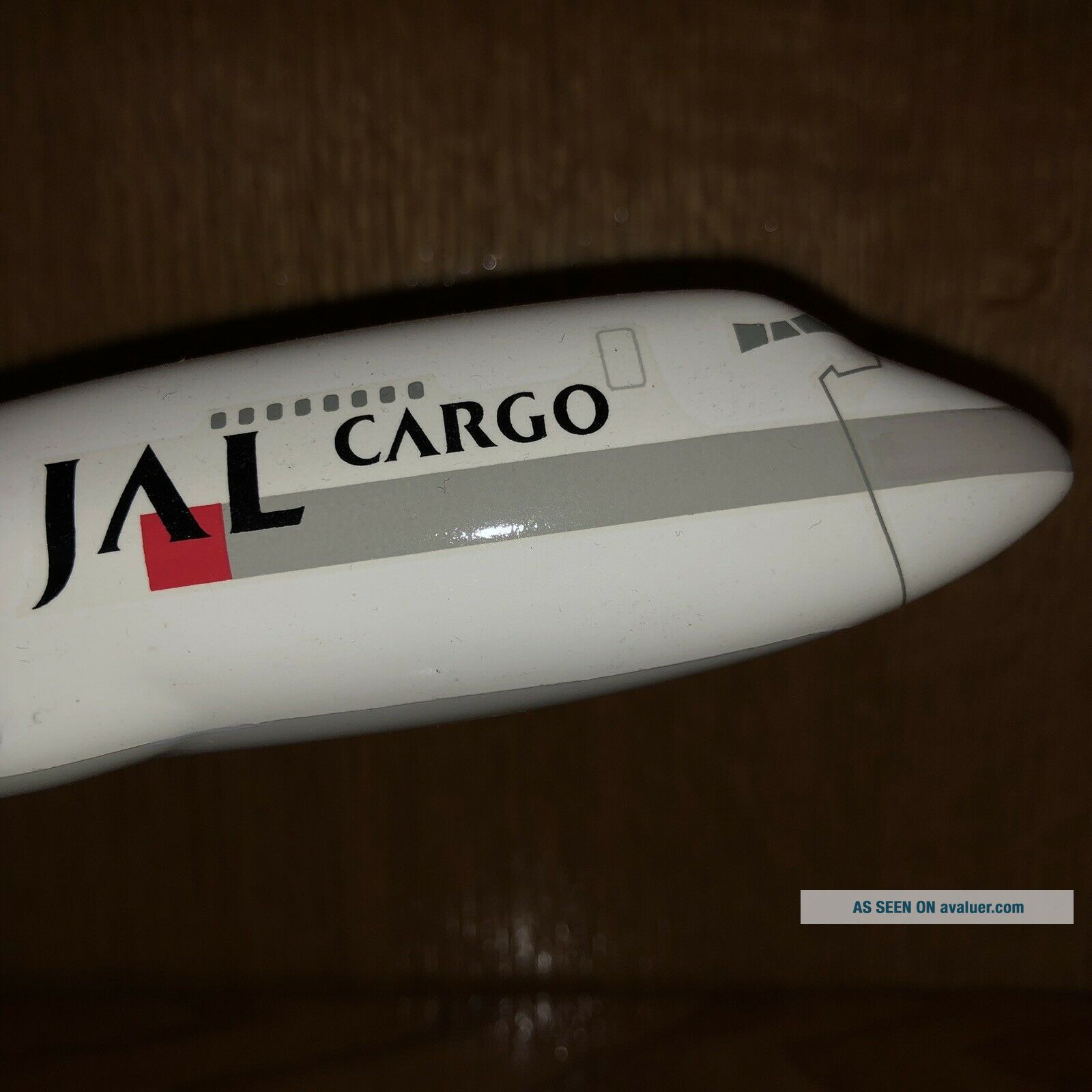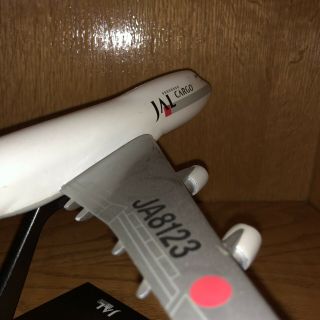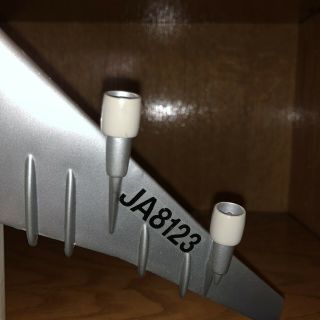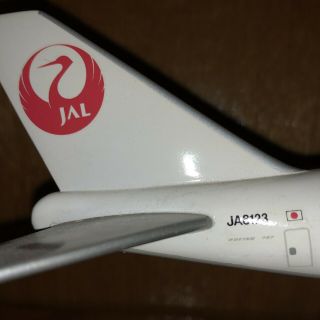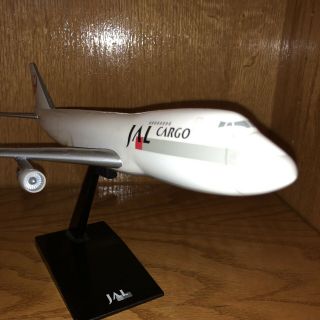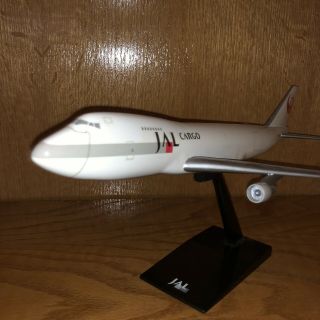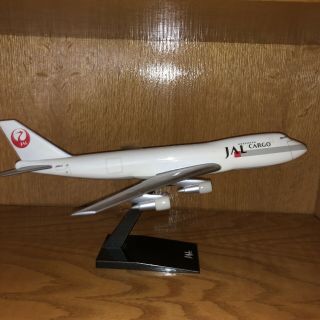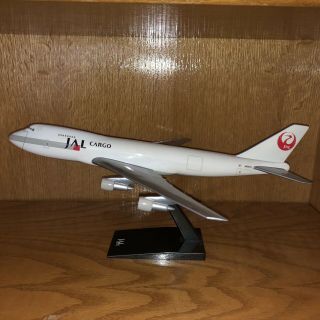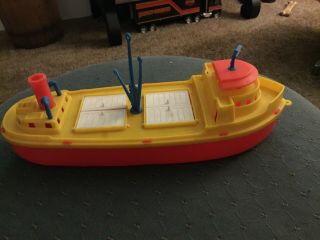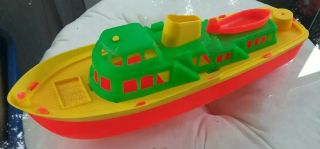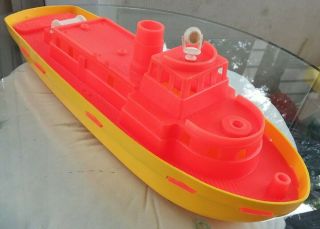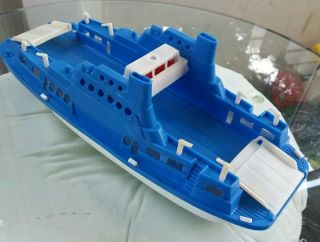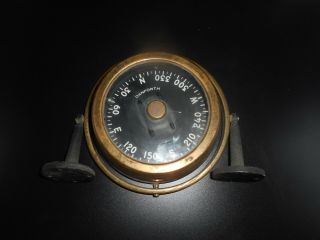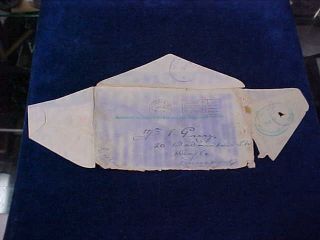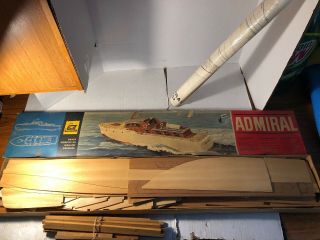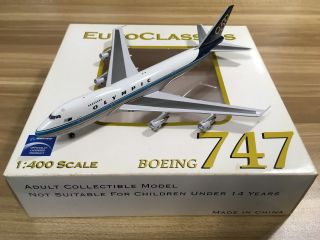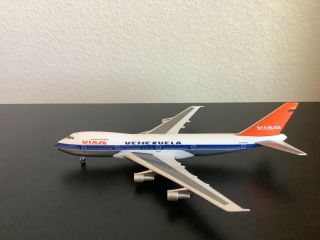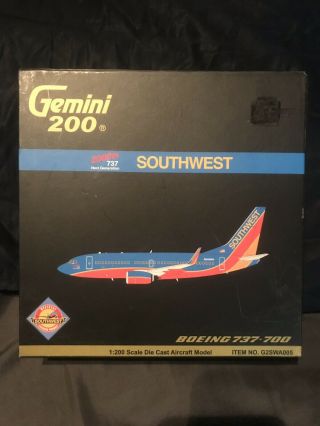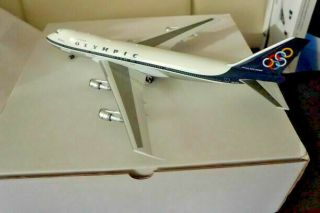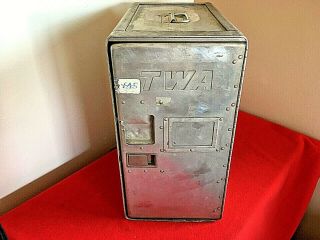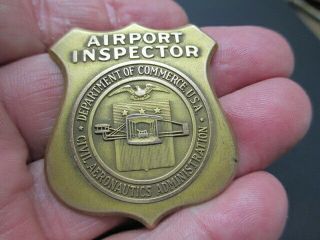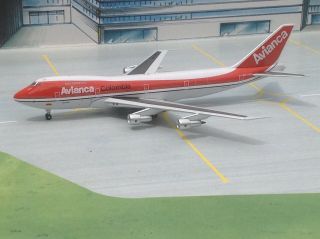Very Rare Vintage JAL Cargo Ship: JA8123 Boeing 747 - 246F 1/200 Scale Model
Item History & Price
| Reference Number: Avaluer:800010 | Type: Aircraft Model |
| Country/Region of Manufacture: Unknown |
Japan Airlines (1959-Present)Callsign: JAPAN AIRBoeing 747-246F (SCD) cargo plane, registered JA8123 becameN705CK Kalitta Air and is now in storage.JAL was established in 1951 and became the national airline of Japan in 1953. After over three decades of service and expansion, the airline was fully privatised in 1987. In 2002, the airline... merged with Japan Air System, Japan's third-largest airline and became the sixth-largest airline in the world by passengers carried. Japan Airlines is currently an official sponsor of Japan Football Association, Japan national football team, Shimizu S-Pulse, and Consadole Sapporo. All Nippon Airways, the largest airline in Japan, is JAL's main competitor.
Japan Air Lines Co., Ltd. was established on 1 August 1951, with the government of Japan recognising the need for a reliable air transportation system to help Japan grow in the aftermath of the World War II. The airline was founded with an initial capital of ¥100 million; its headquarters are located in Ginza, Chūō, Tokyo. Between 27 and 29 August, the airline operated invitational flights on a Douglas DC-3 Kinsei, leased from Philippine Airlines. On 25 October, Japan's first postwar domestic airline service was inaugurated, using a Martin 2-0-2 aircraft, named Mokusei, and crew leased from Northwest Airlines.
On 1 August 1953, the National Diet passed the Japan Air Lines Company Act, forming a new state-owned Japan Air Lines on 1 October, which assumed all assets and liabilities of its private predecessor.
By 1953, the JAL network extended northward from Tokyo to Sapporo and Misawa, and westward to Nagoya, Osaka, Iwakuni, and Fukuoka.
On 2 February 1954, the airline began international flights, carrying 18 passengers from Tokyo to San Francisco on a Douglas DC-6B City of Tokyo via Wake Island and Honolulu.
The flights between Tokyo and San Francisco are still Flights 1 and 2, to commemorate its first international service. The early flights were advertised as being operated by American crews and serviced by United Air Lines in San Francisco.
The airline, in addition to the Douglas DC-3, Douglas DC-6B, and Martin 2-0-2s, operated Douglas DC-4s and Douglas DC-7Cs during the 1950s.
JAL flew to Hong Kong via Okinawa by 1955, having pared down its domestic network to Tokyo, Osaka, Fukuoka, and Sapporo.
By 1958, the Hong Kong route had been extended to Bangkok and Singapore. With DC-7Cs, JAL was able to fly nonstop between Seattle and Tokyo in 1959.
In 1960, the airline took delivery of its first jet, a Douglas DC-8 named Fuji, introducing jet service on the Tokyo-Honolulu-San Francisco route. JAL went on to operate a fleet of 51 DC-8s, retiring the last of the type in 1987.
Fuji flew until 1974 and was then used as a maintenance training platform until 1989; its nose section was stored at Haneda Airport and eventually put on public display at the JAL Sky Museum in March 2014.
JAL also began flying to Seattle and Hong Kong in 1960. At the end of 1961, JAL had transpolar flights from Tokyo to Seattle, Copenhagen, London, and Paris via Anchorage, Alaska, and to Los Angeles and San Francisco via Honolulu, Hawaii.
By 1965, Japan Air Lines was headquartered in the Tokyo Building in Marunouchi, Chiyoda, Tokyo. By this time, over half of JAL's revenue was generated on transpacific routes to the United States, and the airline was lobbying the United States for fifth freedom rights to fly transatlantic routes from the East Coast.
The transpacific route was extended east from San Francisco to New York in November 1966 and to London in 1967; flights between San Francisco and London ended in December 1972.
Between 1967 and 1969, JAL had an agreement with Aeroflot to operate a joint service between Tokyo and Moscow using a Soviet Tupolev Tu-114. The flight crew included one JAL member, and the cabin crew had five members each from Aeroflot and JAL. The weekly flight started in April 1967; in May, the schedule was 10 hr 35 min Moscow to Tokyo and 11 hr 25 min to return.[citation needed]
In 1972, under the 45/47 system (45/47体制 yongo-yonnana taisei), the so-called "aviation constitution" enacted by the Japanese government, JAL was granted flag carrier status to operate international routes. The airline was also designated to operate domestic trunk routes in competition with All Nippon Airways and Toa Domestic Airlines.
The signing of a civil air transport agreement between China and Japan on 20 April 1974 caused the suspension of air routes between the Taiwan and Japan on 21 April.
A new subsidiary, Japan Asia Airways, was established on 8 August 1975, and air services between the two countries were restored on 15 September. During the 1970s, the airline bought the Boeing 727, Boeing 747, and McDonnell Douglas DC-10 for its growing routes within Japan and to other countries.
In the 1980s the airline performed special flights for the Crown Prince Akihito and Crown Princess Michiko of Japan, Pope John Paul II and for Japanese prime ministers, until the introduction of the dedicated government aircraft using two Boeing 747-400, operated as Japanese Air Force One and Japanese Air Force Two. During that decade, the airline introduced new Boeing 747-100SR, Boeing 747-SUD, and Boeing 767 jets to the fleet, and retired the Boeing 727s and Douglas DC-8s.
In 1978, JAL started flights to São Paulo and Rio de Janeiro via Anchorage and San Juan; the stopover was changed to Los Angeles in 1982 and to New York's John F. Kennedy International Airport in 1999.
Until 2009, the airline operated fifth-freedom flights between New York and São Paulo and between Vancouver and Mexico City.
Japan began considering airline deregulation in the late 1970s, with the government announcing the abandoning of the 45/47 system in 1985.
In 1987, Japan Airlines was completely privatised, and the other two airlines in Japan, All Nippon Airways and Japan Air System, were permitted to compete with JAL on domestic and international routes.
Increased competition resulted in changes to the airline's corporate structure, and it was reorganised into three divisions: international passenger service, domestic passenger service, and cargo (including mail) service.
Japan Airlines began the 1990s with flights to evacuate Japanese citizens from Iraq before the start of the Gulf War. In October 1990, Japan Air Charter was established, and in September 1996, an agreement with the Walt Disney Company made Japan Airlines the official airline of Tokyo Disneyland. JAL Express was established in April 1997, with Boeing 737 aircraft.
In the 1990s, the airline encountered further economic difficulties stemming from recessions in the United States and United Kingdom, plus a domestic downturn. Following years of profit since 1986, the airline began to post operating losses in 1992. Cost-cutting, including the formation of the low-cost JAL Express domestic subsidiary and the transfer of tourist operations to JALways (the successor to Japan Air Charter), helped return the airline to profitability in 1999.
In 1997, the airline flew Japanese Prime Minister Ryutaro Hashimoto to Peru to help negotiate in the Japanese embassy hostage crisis. Japan Airlines placed orders for Boeing 777s during the 1990s, allowing for fleet renewal. It was one of eight airlines participating in the Boeing 777 design process, shaping the design to their specifications.
On June 2, 1978, Japan Airlines Flight 115 operated by a Boeing 747SR suffered a tailstrike while landing at Osaka; two passengers were seriously injured and another 23 suffered minor injuries. Although the aircraft was repaired in June and July 1978, it was lost in 1985 in the crash of Flight 123.
On August 12, 1985, Japan Airlines Flight 123 operated by a Boeing 747SR (the same aircraft aforementioned involved in a tailstrike incident) bound for Osaka, lost all its hydraulic flight control systems shortly after takeoff from Tokyo International Airport and, after attempting to limp back to Tokyo, crashed into Mount Takamagahara near Gunma Prefecture. It was the deadliest single-aircraft disaster in history (and the third deadliest air disaster in history, after the September 11 attacks and the Tenerife airport disaster); 520 out of 524 people on board died, including the famous singer Kyu Sakamoto.



